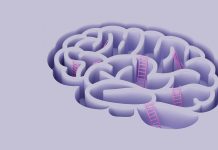Researchers have found that the increased activation of the bilateral prefrontal cortex of the brain after a brief run can improve cognitive function
The study, taken at the University of Tsukuba, showed that after only a brief bout of moderate-intensity improved mood and cognitive function
Only ten minutes of moderate-intensity running is found to increase local blood flow to the various loci in the bilateral prefrontal cortex, this is the part of the brain which plays a vital role in regulating mood and executive functions.
“Contributing to the development of a wider range of treatment recommendations to benefit mental health”
Physical activity has many benefits, such as the ability to improve mood. Exercise has always played an important role in wellbeing, however, in previous studies, cycling was often the form of exercise most studied.
The form required for human running, and the ability to sustain this form of exertion, for instance, with jogging as opposed to sprinting, and the evolutionary success of humans have been found to be closely linked. However, researchers had not yet looked closely at the effects of running on brain regions that control mood and executive functions.
Testing their hypothesis, the researchers used the commonly used Stroop Color–Word Test, capturing data on hemodynamic changes associated with brain activity whilst participants were engaged in each task.
In one task, incongruent information is shown, for instance, the word red is written in green, and the participant is to name the colour rather than read out the word given. In doing so, the brain has to process both sets of information and inhibit the extraneous information.
The Stroop interference effect was quantified by the difference in response times for this task and those for a simpler version of the task, which was stating the names of colour swatches. The results showed that after just ten minutes of moderate-intensity running, there was a significant reduction in Stroop interference effect time.
This demonstrated that bilateral prefrontal activation had significantly increased during the Stroop task, meaning that after running, participants reported being in a better mood.
Highlighting present benefits of running, and the potential benefits exercise had on the evolution of past humans
Professor Hideaki Soya said: “Given the extent of executive control required in coordinating balance, movement, and propulsion during running, it is logical that there would be increased neuronal activation in the prefrontal cortex and that other functions in this region would benefit from this increase in brain resources.”
First author Chorphaka Damrongthai adds: “This was supported by findings of coincident activations in the prefrontal cortical regions involved in mood regulation.”











